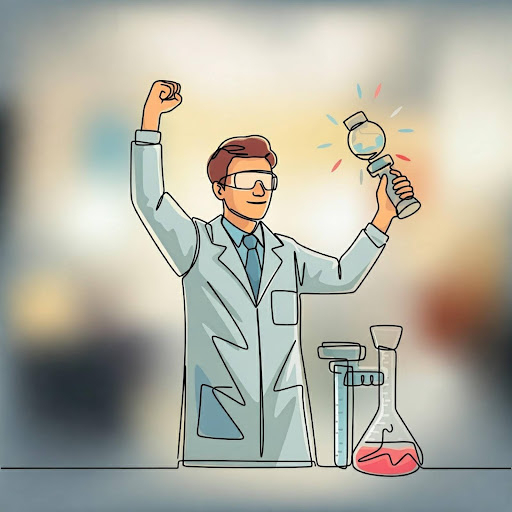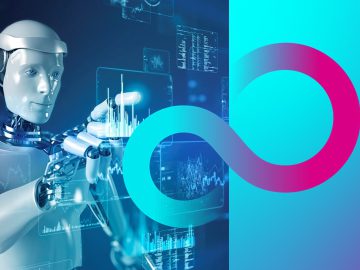A year ago, the world was swept up in a wave of excitement about AI, with grand promises that large language models (LLMs) would transform key industries, from manufacturing to life sciences. Now, as some of these initial solutions begin to reach the market, one area we’re all keenly observing is the impact AI is having on scientific discovery.
A critical player in this movement is Dotmatics, a US-based software company that has been building solutions for scientists to improve the speed and efficiency of their R&D processes for many years.
Investment into R&D for life sciences is growing at an unparalleled rate. And yet for APAC pharmaceutical companies in particular, the ROI of their investment has been declining as the time and cost of bringing a new drug to market has spiked, often costing $2-6 billion per approved drug and taking more than a decade.
That’s precisely why APAC companies are turning to Dotmatics and its unique approach to ML/AI. Dotmatics recently introduced Luma—a breakthrough new scientific intelligence platform that helps scientists and administrators unify and analyze vast volumes of data for better decision-making. Built on Databricks, Dotmatics Luma lets researchers pull data into the platform from all of the most popular scientific applications and lab instruments, a major development for scientists who typically struggle with critical data trapped in silos. Luma can handle both the volume and complexity of data at a nearly exponential scale, and it’s built to do so in a way that scientists can easily control all on their own.
Double-click on the Digital Transformation Journey
Dotmatics’ CEO Thomas Swalla describes the digital transformation journey toward achieving predictive and generative insights in three primary phases: Foundational, Transformational, and Aspirational. Many companies sit in one of the first two phases. Most are “foundational,” they do the basics like simplifying the application landscape and workflows, and doing digital data capture. Some are in the “transformational” phase; they’ve recently implemented a platform to harmonize all their data, and perhaps are even starting to achieve analytical insights as a result.
“Everyone is moving towards the ‘aspirational’ phase—first achieving lab automation, then starting to utilize AI to gain new insights in research, and ultimately, performing in silico methods, and simulations,” said Swalla. “We get excited because once you have data in an intelligence platform like Luma, you can do some remarkable things. This is where scientists working on life-saving discoveries from cancer research to food scarcity hope that technology can expedite important breakthroughs.”
However, he notes that too many organizations are stuck in the early part of that second “transformational” phase. That’s because much of the life sciences industry struggles with complex, massive, yet isolated data points from applications and instruments, and bringing all of these data points together between applications is a thorny, multi-year process. Without a harmonized data platform, they simply cannot get insights at scale from their data.
That’s why scientists are increasingly working with software companies like Dotmatics to both become AI ready, and then to propel their AI initiatives forward.
What is an AI Powered Lab-In-A-Loop?
Today, Dotmatics software is used by more than 2 million scientists globally from Bristol-Myers Squibb and Merck to research universities like MIT and Oxford—and many of the top 10 pharmaceutical companies are in the process of implementing the new Dotmatics scientific intelligence platform, Luma.
Once data from applications, databases, and instruments are centralized in Luma, labs open up a new world of possibility for AI. Dotmatics describes the use of AI by scientific labs as a series of progressively, but complementary, layers of differentiation – with each layer becoming more differentiated and therefore more valuable to a business.
It starts with basic “Assistive AI” which we commonly see as a tool that assists users with repetitive tasks such as building queries or app configuration—commonly seen in AI Chatbots from the advent of generative AI. From that, AI becomes even more effective and differentiated in “Domain-focused AI,” which for the domain of science is focused on predicting scientific outcomes. This happens now, for instance, with flow cytometry “autogating,” where, thanks to machine learning, identifying cell populations in a blood sample goes from weeks to nearly instant, and with far greater accuracy.
Swalla describes the highest level of differentiation as “Integrated Multimodal AI,” where scientists can drive simulations and predictions by leveraging all their multimodal data, across all scientific techniques and disciplines. This is where the promise of AI for drug development and discovery ultimately comes together. From elementary science classes to graduate work studies, the ‘Make-Test-Decide’ cycle is taught and understood logically. Today, the injection of AI and scientific intelligence platforms like Luma, are speeding up this “Lab-in-a-Loop” concept – a beautiful interplay between the scientific wet lab where experiments are physically performed, and the dry lab, where experiments can be simulated and modeled and where informed AI engines can recommend the next experiment to test in the wet lab.
An example might be with antibody drug conjugates which require the ability to focus on both a small molecule and a biologic, and finding a way to optimize the combined nature of the two to attack the target in the most appropriate way. That type of power and flexibility is a game-changer for scientists.
The end goal is to bring the long, convoluted and expensive drug discovery process down from a decade to a few years, and from billions to millions of dollars, in order to get lifesaving therapeutics in the hands of patients much faster and cheaper and in a manner that is personalized. It’s companies like Dotmatics who are bringing together the science data with the data science in this new AI-driven Lab-in-a-Loop to drive these efficiencies to make truly personalized medicine a reality.




